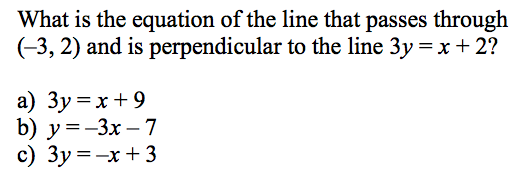Today there is no lack of outrage directed at the high-stakes standardized testing that has become so prevalent in the U.S. educational system. A recent opinion piece in The New York Times examines the backlash against the Common Core and lays the blame not on the standards themselves, but rather on the rise in testing that has accompanied their implementation. My former colleague, Steven Rasmussen, has also written an incisive report, taking the online Smarter Balanced Common Core mathematics tests to task.
Since some form of testing will always be with us, I choose to think positively, believing that good tests can foster and reinforce the types of mathematical thinking we’d like students to develop. In my utopian view of assessment, tests are opportunities for students to learn and for teachers to gather meaningful information about their pupils’ understanding.
Unfortunately, with computer-based testing on the rise, we’re seeing lots of assessment items that are easy for a computer to grade (e.g., multiple-choice questions) and far fewer questions that give students the chance to flex their mathematical muscles in productive ways.
In my prior posts, I presented two Web Sketchpad-based interactive assessments relating to isosceles triangles and the Pythagorean Theorem. You can be the judge, but I think both questions are small but important steps along the path to better computer-based assessments. Now I’d like to share another Web Sketchpad assessment item that I developed in collaboration with Steve Rasmussen, Scott Steketee, and Nick Jackiw.
Let’s start, as I have in my previous two posts, with a paper-and-pencil assessment question:
It doesn’t get more routine than this. Students must know the relationship between the slopes of perpendicular lines and use this information to derive the equation of the line in question. If they’re clever, they can sidestep the algebraic manipulation by noticing that only choice (b) has the correct slope.
By comparison, try the interactive Web Sketchpad item below:
The difference between the two questions is stark: Whereas the paper-and-pencil item basks in algebra and equations, the Web Sketchpad version eschews algebra entirely. This raises an interesting issue: By asking students to manually position a line rather than derive its equation, have we designed too simple a question?
I don’t think so.
From my experience teaching algebra to college students, the standard approach to lines and their equations is endlessly confusing. Slope, slope-intercept form, standard form, point-slope form…the terminology associated with linear equations produces a jumble of rules, leaving students convinced that lines are an impossible nut to crack. And to that list of half-understand terms, I would add “negative reciprocal.”
So suppose students who have never been introduced to the slope relationship of perpendicular lines work through a sequence of four questions like the one above (Press the arrow in the lower-right corner of the sketch to move between the questions.) Sketchpad can tell students whether their lines are perpendicular (press the Check button), but this is not the actual assessment piece of the task. Rather, students use this opportunity to gather data—numerical, visual, some combination of both—that helps them to make sense of what’s true about the slopes of any pair of perpendicular lines.
The real assessment comes afterward and is formative in nature. Students use their experience with Sketchpad to describe what they observed about the slopes of perpendicular lines. This write-up could take a variety of forms. Students might have discovered the negative reciprocal relationship and describe it with numbers alone. Or, they might draw and annotate a picture of slope triangles that visually demonstrates the relationship. There are lots of possibilities for what students might do (Try it with your students and let me know!)
I’m cheating a little here because students’ explanation of the slope relationship must be evaluated by a teacher, not a computer. But it’s through the experience of using the computer to experiment that students form their insights.
This makes for a nice example of how learning can take place during an assessment, and not just in a conventional lecture setting. With assessments like this, testing doesn’t sound so bad!
